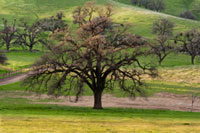The 51st Pioneer Infantry from a NY Guard History
There is a chapter in “Three Quarters of a Century with the Tenth Infantry New York National Guard 1860-1935” that discusses the Tenth Infantry in World War I. The Tenth Infantry became the 1st and 51st Pioneer Infantries. I read the chapter once for context, then again to identify the actions of the 51st Pioneer Infantry. The chapter contained some details for specific Companies. This details in this chapter outlined the experience that my Grandfather had while he was in the service. I knew about the 51st Pioneer Infantry’s combat at St. Mihiel, described in a post on this blog about WWI medals.
While reading, I kept in mind that Joseph McMahon was in Co. B 51st Pioneer Infantry. He was inducted on 28 May 1918, and discharged on 10 July 1919.
The following events involving the 51st Pioneer Infantry were extracted from “Three Quarters of a Century with the Tenth Infantry New York National Guard 1860-1935” (1936) by Clarence S. Martin. Chapter XI covers the Tenth Infantry. From these details, I can gather pictures of the places and news of the day. One of the first things would be to look into the ships that carried him to France and back.
- 14 Jan 1918 Col J Guy Deming from Ohio National Guard put in charge of 51st
- 17 May 1918 first draft contingent arrive Camp Wadsworth, SC
- Drills were intense, and involved digging trenches, road and bridge repair and building. Also infantry drill. They were busy from morning to late at night.
- 27 July 1918 – 51st entrains for Camp Merritt,NJ
- 29 July 1918 – left Camp Merritt, NJ, and marched to Alpine Landing
- They were placed on ferries to Hoboken, NJ, then put aboard German steamer “Kroonland”
- Approaching French coast
- British and French destroyers surrounded the troop ship
- They sailed past St. Mathieu lighthouse through LeGoulet Channel into Bay of Brest
- French and British airplanes flew low looking for submarines
- Several lighter-than-air blimp ships flew low in front of the convoy
- 8 Aug 1918 – “Kroonland” arrives Brest, France in the rain (it rained the day they left 300/365 days in 1918)
- The Tenth and First stayed at Pontanezan Barracks which were built by Napoleon when he was using Brest as his base for an attack on Britan
- Marched from the docks to the city on a ramp-like roadway to a hearty welcome
- Left Brest by train from Kerner Station on the waterfront, enlisted men 40 to a box car (Built for 8 horses)
- 51st sent to Northeast France, detrained at Maron, Moselle
- Billeted there
- HQ of 51st at Maron, Moselle, with the First and Third Battalions
- 12 Sep 1918 – Started to drive to St. Mihiel front
- Company B attached to First Division
- Their first experience with exploding shells, and enemy machine guns and airplanes dropping bombs
- The Pioneers kept roads and bridges repaired and rebuilt. They were tasked with keeping the lines of communication open.
- Trucks were filled with broken brick and stone from destroyed cities and villages. These trucks were prepositioned where enemy attacks were expected. As soon as a shell had exploded in a road, the crew came and repaired it.
- “The men of the Fifty-First performed the duties assigned to them in a most credible manner.”
- Companies B and D, under Captain Niles – ½ caught in barrage between Seicheprey and Richecourt – Corp. Slattery killed.
- 20 Sep the Fifty-First ordered to Saizerais and joined 6th Army Corps. They were between the advanced lines and artillery positions, tasked with repairing roads and bridges.
Army of Occupation
- The Armistice was signed; the hostilities ended. The Fifty-First was sent to Buxreule. The First was also selected for this duty and was sent to Murvaux.
- They went through northern France via the Duchy of Luxembourg.
- The Fifty-First entered Germany by following the banks of the Moselle River. (First traveled the Rhine.)
- They passed through Lorraine, and northern France. They saw the destroyed cities and villages; the Germans shelled, the French shelled German-occupied places. There was no destruction in Luxembourg and Germany.
- The German people were welcoming.
- The Fifty-First’s first stop was they guarded roads and bridges in Aspalt, Luxemburg.
- 3 Dec 1918 crossed Moselle River into Germany
- Followed stream, camped Wittlich Alf, Bollens, Caidens
- Before Kochen [Kochem, Cochem], Col Deming was relieved, Lt. Col Saulspaugh took charge
- 2 Jan in Kochen [Kochem, Cochem] near Coblenz the Regimental Command was established.
- Companies billeted in small towns around Coblenz.
- 19 Jan Col J. L. Gilbreth assumed command
- 18 Mar 1919 Gen Pershing reviewed the Regiment.
- Fifty-First men had a good time while at Coblenz. There was plenty of leave and not a lot of heavy work.
- They traveled from Coblenz to LeMans, France by “side car” Pullmans which were quicker than the trains they took going. LeMans had narrow crooked streets and no indoor plumbing. People had to bathe at the bath houses.
- At LeMans the Fifty-First was deloused, and given new uniforms and underwear.
- 23 June the Fifty-First sailed from St. Nazaire on the “Wilhemina”
- 3 July they arrived in New York harbor
- 4 July they were sent to Camp Mills
- 6 July they left Camp Mills for Camp Upton and were mustered out



